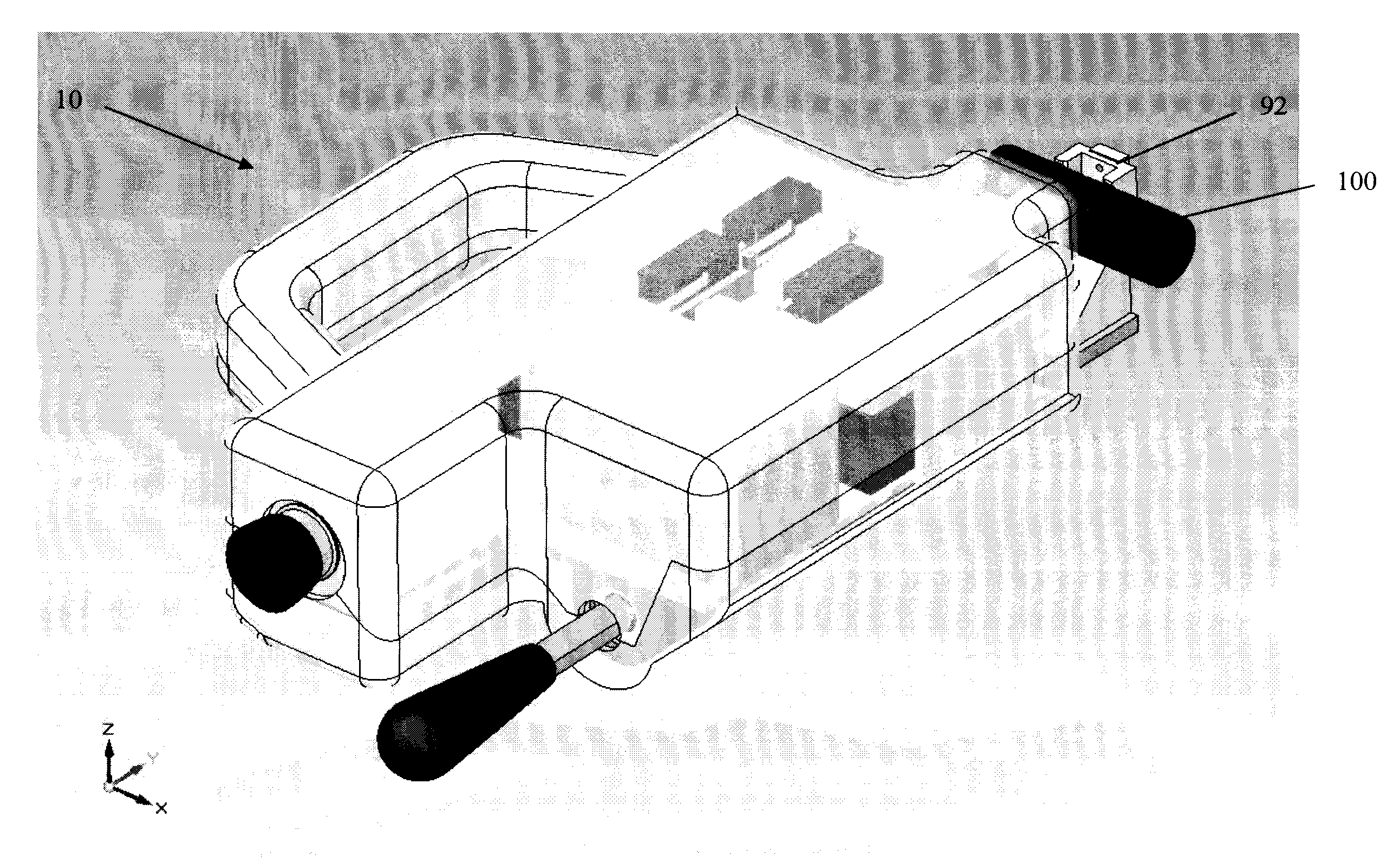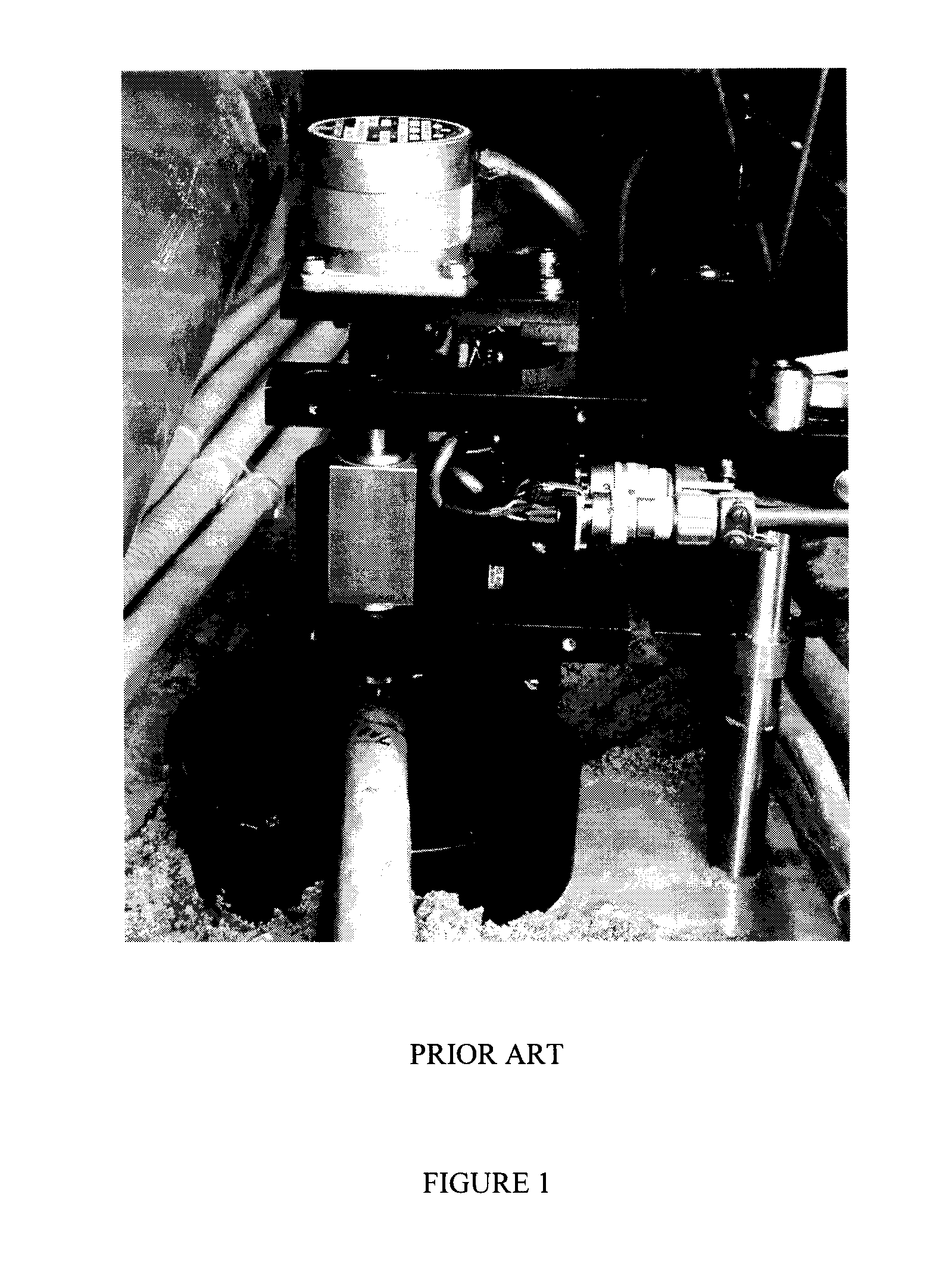Portable polymer tester
a polymer tester and portable technology, applied in the field of polymer material testing, can solve the problems of cable age, significant adverse effects on human safety, and loss of dielectric strength,
- Summary
- Abstract
- Description
- Claims
- Application Information
AI Technical Summary
Benefits of technology
Problems solved by technology
Method used
Image
Examples
example 1
Indenter Testing of PVC Cable Jacket Thermally Aged Only
[0134]A series of PVC cable jacket samples were thermally aged at 110° C. in a ventilated oven for durations of up to 200 days. The aged samples were then tested using a PPT according to one embodiment of the present invention.
[0135]The specific compressive stiffness results are shown in FIG. 9. There is a gradual change in stiffness as a function of the number of thermal aging days, from 11.9 N / mm for the unaged samples to 21.7 N / mm for samples thermally aged 200 days at 110° C. The time to recover 35% of the initial deformation is shown in FIG. 10. It can be seen that the recovery time is very sensitive to the effect of increased thermal aging duration, with a change of about +75% after 50 days, +167% after 75 days, +392% after 100 days, and +788% after 200 days.
example 2
Indenter Testing of PVC Cable Jacket Irradiated Only
[0136]A series of PVC cable jacket samples were irradiated in a gamma cell at doses ranging from 2 to 60 MRad. The samples were then tested using a PPT according to one embodiment of the present invention and using a standard elongation-at-break method. The dumbbell-shape of PVC cable jacket specimen is placed in the pneumatic grips of a Lloyd LR5K tensile test machine and pulled until failure. The EAB parameter is defined as the percentage increase in elongation at the time of fracture.
[0137]The reference elongation-at-break data for these irradiated PVC cable is shown as a function of irradiation dose in FIG. 11. The graph shows that at 60 MRad the elongation-at-break is down to 50% absolute, a level of degradation that corresponds to the commonly accepted end-of-life point for a cable [IAEA-TECDOC-1188, 2000 (above)].
[0138]The specific compressive stiffness results for irradiated PVC cable jacket samples are shown in FIG. 12. Th...
example 3
Derivation of Dynamic Parameters Using the PPT in Oscillatory Mode for Unaged and Irradiated Silicone Samples
[0140]The dynamic stiffness parameters and the visco-elasticity parameter D are compared in Table 1 for unaged and 60 Mrad irradiated samples of a silicone door seal material used in nuclear stations. As a result of irradiation, the real component of the dynamic stiffness k′ increases from 4.88 to 7.81 N / mm. The imaginary component k″ decreases from 0.89 to 0.45 N / mm. The visco-elasticity parameter D increases from 5.48 to 17.3. The force is shown as a function of displacement in FIG. 20 for the unaged and irradiated samples.
TABLE 1Comparison of dynamic parameters derived using the PPT oscillatory mode for unaged and irradiated silicone samplesDynamic Parameters Derived forUnaged Sili-70 Mrad Irradiateda 5 Hz Sinusoidal Motioncone SampleSilicone SampleReal Component of Dynamic Stiffness:4.887.81k′ (N / mm)Imaginary Component of Dynamic0.890.45Stiffness: k″ (N / mm)Absolute Dynami...
PUM
| Property | Measurement | Unit |
|---|---|---|
| dynamic stall force | aaaaa | aaaaa |
| static hold force | aaaaa | aaaaa |
| operating temperature | aaaaa | aaaaa |
Abstract
Description
Claims
Application Information
 Login to View More
Login to View More - R&D
- Intellectual Property
- Life Sciences
- Materials
- Tech Scout
- Unparalleled Data Quality
- Higher Quality Content
- 60% Fewer Hallucinations
Browse by: Latest US Patents, China's latest patents, Technical Efficacy Thesaurus, Application Domain, Technology Topic, Popular Technical Reports.
© 2025 PatSnap. All rights reserved.Legal|Privacy policy|Modern Slavery Act Transparency Statement|Sitemap|About US| Contact US: help@patsnap.com



